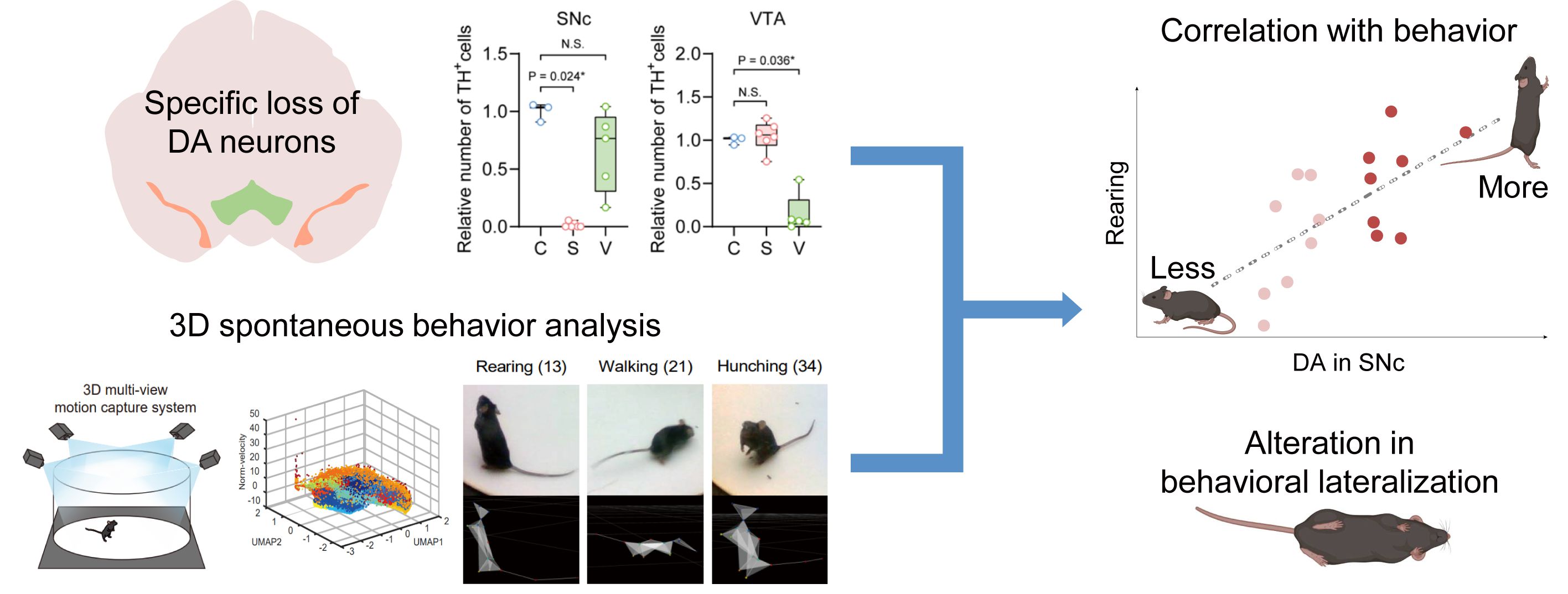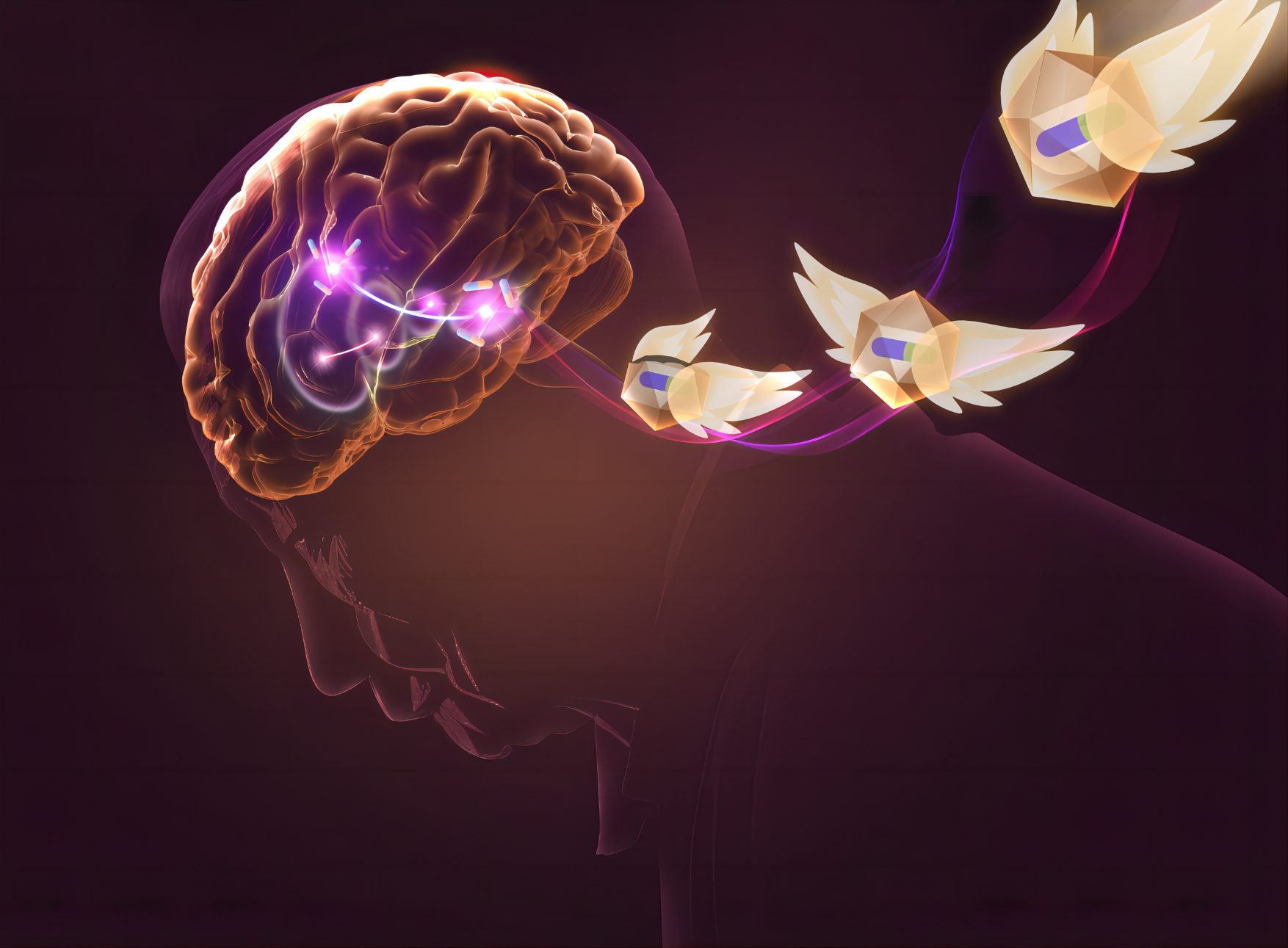
Subtle Movement Shifts May Enable Earlier Parkinson's Detection
Midbrain dopamine (DA) neurons, located in the substantia nigra pars compacta (SNc) and the ventral tegmental area (VTA), are essential for regulating movement, emotion, and reward processing. Dysfunction of DA neurons in the SNc has long been linked to Parkinson's disease (PD). Although previous research has focused on the broader functions of DA neurons in mood regulation and reward mechanisms, their specific contributions to more subtle and spontaneous behaviors remain poorly understood.
Recently, a research team led by Prof. LIU Xuemei and Prof. WEI Pengfei from the Shenzhen Institutes (SIAT) of Advanced Technology of the Chinese Academy of Sciences, discovered that behaviors such as rearing, walking, and hunching were associated with the loss of SNc DA neurons, but not VTA DA neurons, along with increased locomotor activity, diminished movement accuracy, and marked right-side dominance. These subtle features serve as key behavioral biomarkers of SNc DA neuron loss, enhancing the translational value of PD models.
The study was published in Translational Psychiatry on 3 April.
Using an innovative machine learning-enhanced 3D spontaneous behavior analysis system, the researchers examined detailed motor behaviors in two mouse models of dopamine neuron depletion: a subacute MPTP-induced PD model and an AAV-mediated DA neuron loss model.
"Our advanced approach enabled the capture of detailed and nuanced behavioral features that traditional 2D methods may overlook, providing deeper insights into the effects of DA neuron depletion," said Prof. WEI.
In the PD model, the researchers observed reductions in rearing and hunching behavior, which correlated directly with the loss of DA neurons in the SNc but not the VTA. Although overall motor deficits were not significant, the study revealed notable behavioral lateralization in the PD mice.
Further experiments using the AAV-induced ablation model confirmed that climbing, a behavior similar to rearing, was also strongly correlated with the loss of DA neurons in the SNc. Additionally, damage to SNc neurons significantly reduced motor function and influenced the lateralization of movement.
These findings highlight the significance of rearing behavior and behavioral lateralization as potential behavioral markers for tracking the progression of PD.
According to Prof. LIU, connecting behavioral changes with targeted neural damage advances our understanding of PD progression and provides valuable insights for improving treatment strategies.

Subtle movement alterations detected using 3D spontaneous behavior analysis system. (Image by SIAT)
File Download:

